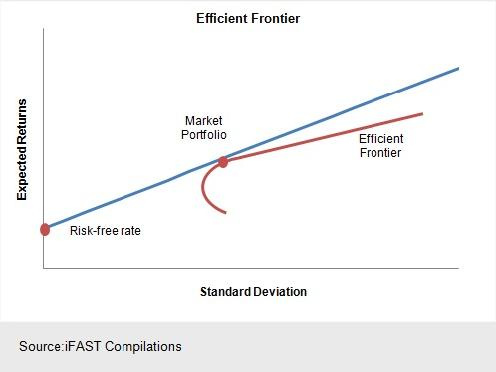Sustainable Investing: Old Trend, New Implication
"If you invest sustainably, you've got just as good a chance of beating the market or not. That question has been put to bed, and that happened during 2015."
- John Streur, President and CEO, Calvert Investment Group.
SUSTAINABLE INVESTING: OLD TREND, NEW IMPLICATION
There has long prevailed an alleged trade-off between return on investment and allocation of capital towards companies that engender positive social/environmental impact.
 Nonetheless, despite varying degrees of impact, the allure of an investment policy with the potential to affect corporate, environmental, and social change has been a recurring theme among a portion of socially-minded investors.Today - as ROI continues to prove that business is not zero-sum, that there need not be a trade-off between profitability and impact - this investor ensemble increases to include investors solely seeking returns. This investor ensemble grows from niche to mainstream.
Nonetheless, despite varying degrees of impact, the allure of an investment policy with the potential to affect corporate, environmental, and social change has been a recurring theme among a portion of socially-minded investors.Today - as ROI continues to prove that business is not zero-sum, that there need not be a trade-off between profitability and impact - this investor ensemble increases to include investors solely seeking returns. This investor ensemble grows from niche to mainstream.
"The year 2015 might well have been the year that sustainable investing became sustainable."
- The Wall Street Journal.
At its onset, socially-responsible investing (SRI) entailed avoidance of specific stocks or industries through negative screening according to moral guidelines. Today, sustainable, or environmental, social and governance (ESG) investing, is an outgrowth of previous iterations. As ESG investing has increased in both popularity and sophistication, it has become less focused on stock restriction, instead encouraging the integration of environmental, social, and governance factors into the fundamental investment selection process.Historically, responsible investing movements have not proved large enough to drive meaningful change. Corporations have generally been unwilling to alter practices without government intervention, exemplified by the necessity of government involvement to ban investments in Cuba, North Korea, and Iran. The chief impediment has been that numerous, conflicting restricted lists of objectionable companies have prevented a critical mass from coalescing on any one issue. In the 1970s, the Calvert Investment Group attempted to mitigate this hurdle by collecting a wide range of concerns for broader appeal.
 While seemingly straightforward for managers to combine multiple restricted lists for stock selection, overly broad vectors result in too narrow an investable list. When the investable universe contracts to such an extent, judgment calls become necessary, uncertain standards arise, and conflicting indices of companies are formed.
While seemingly straightforward for managers to combine multiple restricted lists for stock selection, overly broad vectors result in too narrow an investable list. When the investable universe contracts to such an extent, judgment calls become necessary, uncertain standards arise, and conflicting indices of companies are formed.
The Capital Asset Pricing Model, though riddled with simplified assumptions, argues that, ceteris paribus, investors must consider the entire investible universe in order to architect an optimal portfolio. The model further assumes that risk can be ascertained. According to theory, contracting the universe by excluding companies for ESG or other idiosyncratic factors will not result in the highest return per unit of risk. If a company cannot be excluded, then its risk and return profiles must be assessed and priced accordingly.
The failure of investors to consider the greater risk and volatility associated with companies that do not adhere to higher standards of environmental, social, and governance factors is a critical oversight.
IS INVESTING SUSTAINABLY, SUSTAINABLE?
The data points to yes.
Recent research published by Morgan Stanley, Sustainable Reality, proclaims: "Investing in sustainability has usually met, and often exceeded, the performance of comparable traditional investments. This is on both an absolute and risk-adjusted basis, across asset classes and over time, based on our review of (10,228) US-based Mutual Funds and (2,874) Separately Managed Accounts.Specifically, over a seven-year time horizon, in 64% of the periods examined, sustainable Equity Mutual Funds exhibited equal or lower median volatility and equal or higher median returns, as compared to their traditional counterparts. Similarly, sustainable Separately Managed Accounts (SMAs) portrayed equal or lower median volatility in 72% of the periods examined, and equal or higher median returns in 36% of the periods examined.A 2011 study conducted by Harvard revealed the difference between a $1 investment in 1993 in a value-weighted portfolio of high sustainability companies versus a $1 investment in a value-weighted portfolio of low sustainability companies. The study revealed that the high sustainability portfolio would have augmented to $22.60 by 2010, while the low sustainability portfolio would only have achieved $15.40, a 46.8% difference in investment return.The MSCI KLD 400 Social Index has outperformed the S&P 500 by 45 basis points on an annualized basis since its inception (10.14% versus 9.69%, July 1990 - Dec. 2014).
COULD SUSTAINABLE INVESTING BE TRENDING TOWARDS MAINSTREAM?
In 2012, $1 of every $9 of U.S. assets under professional management was invested "sustainably", the majority of these dollars allocated towards public equities. By EOY 2014, sustainable investments had increased to $1 of every $6 of U.S. assets under professional management, resulting in an ultimate U.S. investor allocation towards sustainability of $6.57 trillion (Morgan Stanley).Globally, the sustainable investment market boasted a 61% increase from 2012-2014, exemplified by an uptick in sustainable investments from $13.3 trillion to $21.4 trillion (Eco-Business).
BIG DOGS BET ON ESG:
When you have some of the largest players in the financial sector taking ESG seriously, it send a powerful signal to the markets - Fiona Reynolds, Managing Director, United Nations Principles of Responsible Investment (UN-PRI).
In 2014, Morgan Stanley Investment Management hired former International Financial Corporation (IFC) CIO, David Wilton, to assist in in its launch of a new Private Equity Global Impact Fund.
"He (David Wilton) has proven through his work at the IFC that long-term positive social impact and strong financial returns can, and should go, hand in hand." - Audrey Choi, CEO of Morgan Stanley's Institute for Sustainable Investing.
In late 2015, Goldman Sachs purchased Imprint Capital Advisors an investment management firm boasting approx. $550 million in AUM, focused on advising clients how to construct portfolios that achieve both optimal returns and environmental/social impact.Merill Lynch also jumped on board in 2015, introducing a new sustainable impact multi-asset class portfolio to its solution set, and investing in an ESG Measurement Resource."Clients are telling us they want their portfolios to reflect their values and help improve the world they live in. As their enthusiasm grows, we continue to offer new opportunities to meet this need. We have made impact investing a strategic priority and will bring clients innovative solutions that help them promote positive social change."In October of 2015, BlackRock launched the BlackRock Impact U.S. Equity Fund (BIRAX), a mutual fund designed to enable investors to achieve both social and financial goals."Demographic shifts, stakeholder advocacy, and government regulation are combining to create unprecedented demand for sustainable and impact investment solutions. Impact investing enables investors to do more with their money than simply achieving a financial return. Through transparent measurement and outcome reporting, impact investing allows investors to better understand how their money is being put to work."The list endures.
THE FUNDAMENTAL QUESTION: What exactly constitutes a sustainable investment?
According to the Global Sustainable Investment Review 2014, a report released in February of 2015, sustainable investment is defined as investing in funds using one or more of the below investment philosophies (the most popular being integration of ESG factors):
- negative/exclusionary screening
- positive/best-in-class screening
- norms-based screening
- integration of ESG factors
- sustainability-themed investing
- impact/community investing
- corporate engagement and shareholder action
The Institute for Sustainable Investing at Morgan Stanley defines sustainable investing as:
- "We define sustainability as a commitment to economic well-being for both the present and the future, balancing society's needs today with the demands of tomorrow. Sustainability encompasses behaviors, processes, tools, and technologies that can be perpetuated and replicated in ways that achieve economic, social, or environmental benefits. We see sustainable investing as the practice of mobilizing capital to businesses that engage in these behaviors and practices."
The United Nations Principles for Responsible Investment defines sustainable investing as:
-
"Responsible investment is an approach to investment that explicitly acknowledges the relevance to the investor of environmental, social and governance (ESG) factors, and the long-term health and stability of the market as a whole. It recognises that the generation of long-term sustainable returns is dependent on stable, well-functioning and well governed social, environmental and economic systems. It is driven by a growing recognition in the financial community that effective research, analysis and evaluation of ESG issues is a fundamental part of assessing the value and performance of an investment over the medium and longer term, and that this analysis should inform asset allocation, stock selection, portfolio construction, shareholder engagement and voting. Responsible investment requires investors and companies to take a wider view, acknowledging the full spectrum of risks and opportunities facing them, in order to allocate capital in a manner that is aligned with the short and long-term interests of their clients and beneficiaries."
While there are numerous efforts focused on mandating standardized reporting and transparency, the major hurdle is that the assessment of environmental, social, and governance risk factors and opportunities remains largely subjective.
INVESTING FOR THE LONG HAUL


